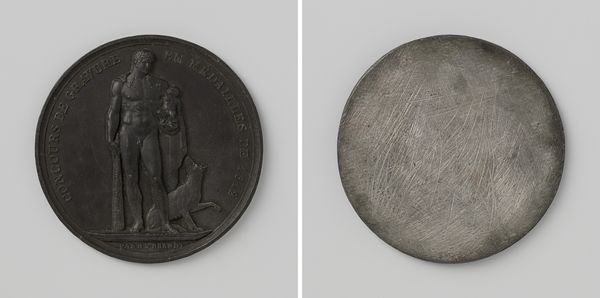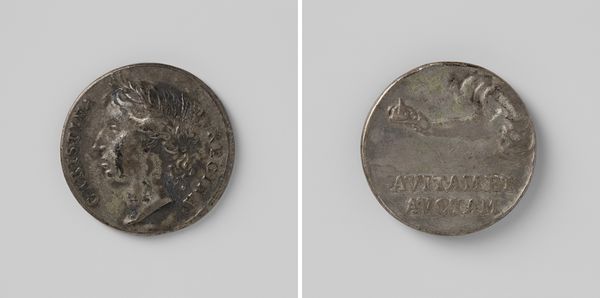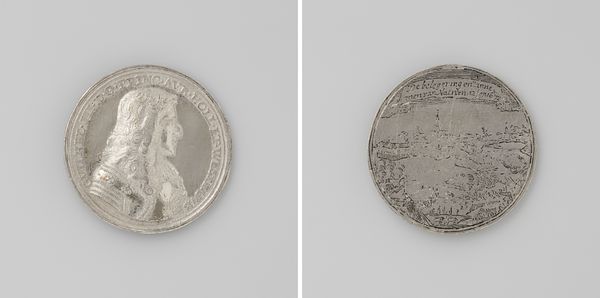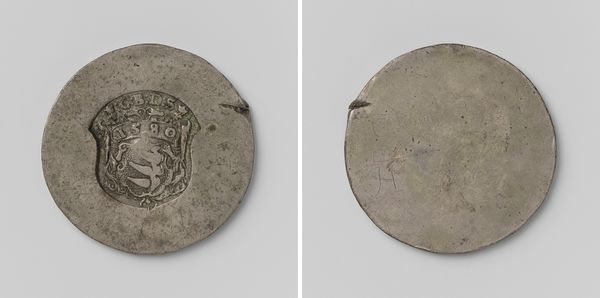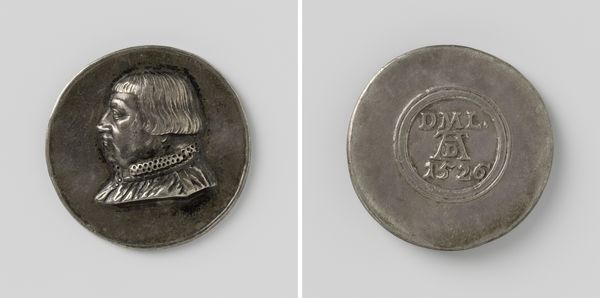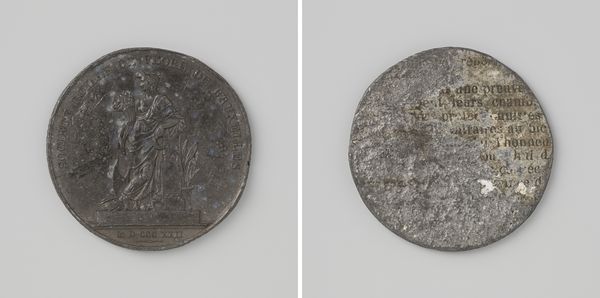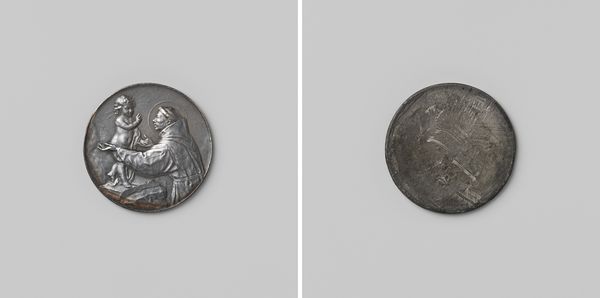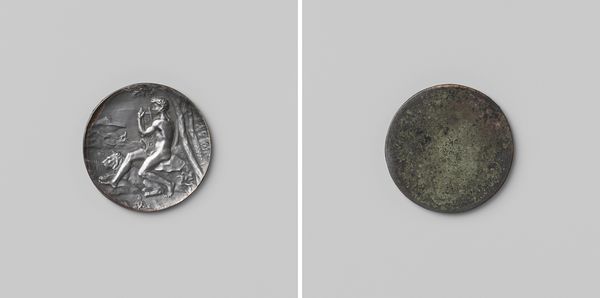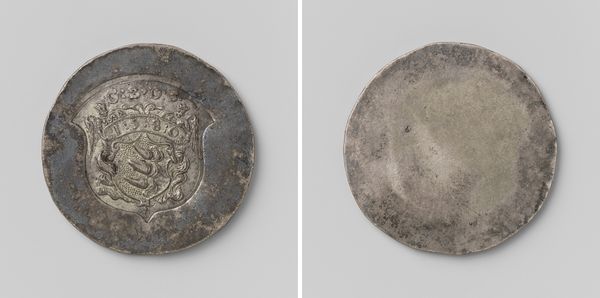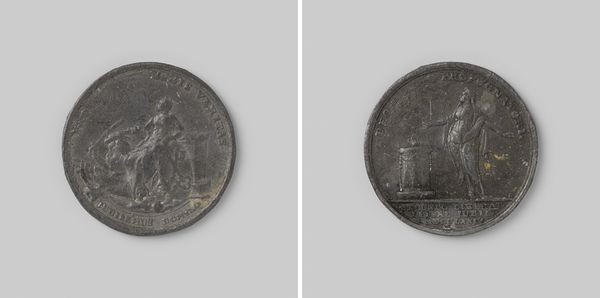
Theseus verkrijgt het zwaard van zijn vader, penning waarmee H.F. Brandt de 'Grand Prix de Gravure en Medaille' won 1813
0:00
0:00
metal, relief, sculpture
#
portrait
#
neoclacissism
#
metal
#
sculpture
#
relief
#
classical-realism
#
figuration
#
classicism
#
ancient-mediterranean
#
sculpture
#
history-painting
Dimensions: diameter 8.2 cm, weight 100.89 gr
Copyright: Rijks Museum: Open Domain
Editor: So, here we have "Theseus verkrijgt het zwaard van zijn vader", or "Theseus obtains his father's sword," a metal Grand Prix de Gravure en Medaille by H.F. Brandt from 1813. The relief shows a male figure with a heroic air retrieving a sword from under a rock. What strikes me is how Brandt uses classicism to reinforce the ideas of heroism and lineage in this depiction. What do you see in this piece? Curator: It's interesting how Brandt's piece adopts neoclassical aesthetics to visualize notions of power and authority in post-revolutionary Europe. Do you think that depicting Theseus, a mythological hero who secured his lineage by claiming his father's sword, had any particular resonance during the Napoleonic era? Editor: Definitely! I'm thinking the story presents Theseus as a legitimate leader because of his lineage. The piece becomes a statement on rightful rule in times of upheaval. How do you feel the style affects that message? Curator: Classicism, with its associations to ancient Greece and Rome, was frequently deployed to evoke notions of order, reason, and, of course, legitimacy. Brandt, by utilizing this style, perhaps sought to give a historical weight and grandeur to contemporary political concerns surrounding leadership. Note how the crisp lines, balanced composition, and idealized figure all reinforce a sense of stability. In this context, a "restored" or "rightful" ruler may connect themselves with a mythical origin, as told in art, reinforcing power structures that benefit themselves and exclude others. What do you make of the object being a 'prize' for engraving? Editor: Ah, good point! So, not just the image but also the award connects this act of mythological ‘proving’ to legitimizing Brandt himself as a master engraver. It really places artistic merit within those established hierarchies. Thanks! That helps me to think about its social impact a little more. Curator: Precisely. By winning the prize, he is similarly writing himself into an artistic and socio-political narrative. It's fascinating to consider how awards can function in this way.
Comments
No comments
Be the first to comment and join the conversation on the ultimate creative platform.


